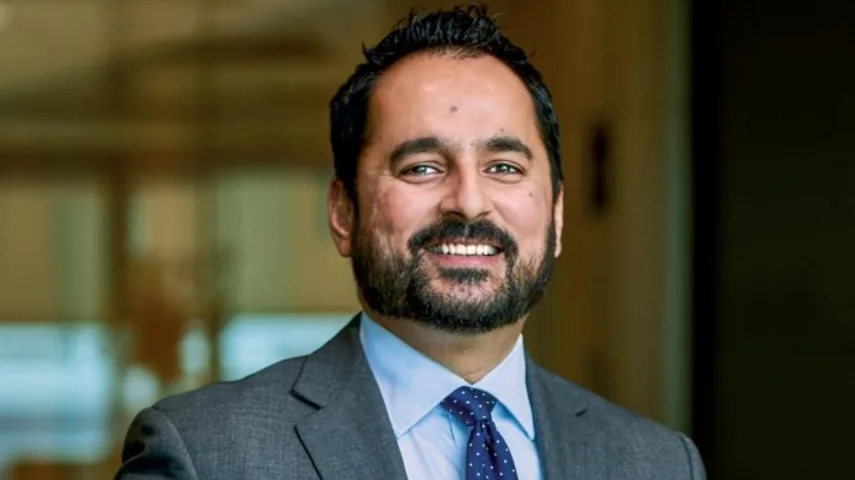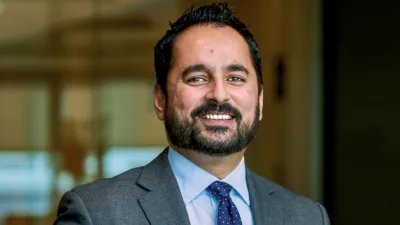Adviser market headed in right direction: Dimensional



In the overarching trend to align advisers with the end client, Australia’s adviser market is headed in the right direction towards ensuring the best consumer outcomes, according to Dimensional veteran Bhanu Singh.
Singh, who was named chief executive in January, noted the industry has experienced much upheaval in the last few years – from the Hayne Commission to banks getting out of the advice business, and the Future of Financial Advice (FOFA) reforms before that.
“The adviser market will evolve over time as it will, and I would argue that the general trend has been in the right direction. We’ve gone away from commissions and vertical integrations, which had some issues and efficiencies, and now more and more, you’re seeing better standards for advisers,” he told Money Management.
Earlier this month, the government announced it would accept 14 of the 22 recommendations made in of the QAR, including cutting red tape through consolidation of three different fee documents into one simplified document; allowing more flexibility in how financial services guides are provided; removing the safe harbour steps from the best interests duty; and replacing statements of advice (SOAs) with a fit-for-purpose advice record for consumers.
Singh believes the decreased compliance burden following the QAR will be a major win for advice practices, which comprised around 70 per cent of the firm’s client base.
“We think advice is crucial to a good investment outcome. We’ve always been a big fan of having an adviser as a coach, a life coach almost, because these issues are very relevant to your quality of life,” Singh explained.
“[Dimensional] can build as good a strategy as we can –- and we think we do a very good job of that given our research pedigree and day-to-day implementation –- but they could still be used in the wrong way.
“That’s where advisers come in, that’s where they are key. The job of understanding the client’s needs, desires, dreams, risks, and appetite is a pretty tough job.”
The asset manager was also waiting to hear from its super fund clients, which are among the 30 per cent of its institutional investor clients, about their ability to now deliver financial advice after the review.
“I think they’re all trying to figure out how to best implement advice [but] the more independent, unconflicted advice out there, the better,” Singh told Money Management.
“If members are going to get some advice from super funds, that’s generally a good thing because advice is complicated, it’s not straightforward, and especially doing it at that scale for that many members.”
Presently, costs are a major problem for the average Australian to access advice. In the latest ASX Australian Investor Study, investors said they would be willing to pay $1,270 annually to receive advice, an increase from $1,100 in the last three years. Unfortunately, this would not cover the average advice fee, which stands at some $3,500.
Singh agreed: “Right now, good advice is too expensive. The key, I think, will be in servicing those with $300,000–$400,000 super balances in an efficient way across the board, when advice can be such an individual activity.”
Technological advances
Taking over as CEO from industry doyen Glenn Crane, who had been responsible for setting up Dimensional’s Australian office in 1994 after meeting its founder David Booth in the US, Singh said it remains business as usual at Dimensional Australia.
Globally, the firm manages about $AU850 billion, which includes about $40 billion for clients in Australia and New Zealand.
“The plan, as chief executive, is the same as always: to provide solutions for our clients,” he said.
“Our industry goes through phases. There’s always a flavour of the month but what you’ll find at Dimensional is that we are very deliberate in the strategies we offer. We don’t chase fads. We have a very high bar on research and strategies to bring to the table, and unless we see significant client demand – I would even go as far as to say we vet the demand to make sure it’s there for the right reasons – we usually don’t bring strategies out.
“It means our growth is organic. It’s about meeting client needs, bringing the right strategies with the right mindset to the market.”
The idea was never to jump to the next big shiny thing, he said, which would now include the implementation of artificial intelligence (AI) that has been generating much discussion in the industry.
Multinational firms like JPMorgan Chase are embracing AI-driven technological innovations. Recently, the bank applied to trademark a product called IndexGPT that will use AI towards selecting investments for customers.
Similarly, Morgan Stanley Wealth Management has implemented a Next Best Action tool acting as a platform for personalised communication and client engagement.
“One aspect you hear [about AI] is whether it can help you build a better mouse trap for returns or risk match,” Singh said.
“Ultimately, it’s like that star stock-picker with the uncanny ability to pick trades –- pretty soon it gets replicated.”
Recently, ASIC described AI as a “high and important priority” and indicated it will hold consultations in the next financial year to reflect AI developments.
Singh noted: “It’s one thing to find ‘signals’ in data. We don’t have a lot of [data], despite what everyone says, as it’s only about 100+ years of data, and data is easy. But implementing it into real life well-diversified portfolios at scale is a whole different ball game.”
As head of Dimensional’s Asia-Pacific portfolio management since 2015, Singh said he would be keeping a close eye on developments in this area.
“But there’s nothing theoretically or empirically we’ve seen so far to say AI portfolios are going to shoot the lights out,” he stated.
Looking ahead
In terms of the year ahead, Singh stopped short of making any tailwind or headwind predictions, given the firm’s ‘systematic active’ approach to investing for the last four decades.
He explained: “We don’t tend to rebalance portfolios once a month or once a quarter like typical indices do – we look at it every single day and trade when it makes sense. There’s no sort of prediction model there, no forecasting model about headwinds.
“If you look at the records in the last four years, you probably shouldn’t have much faith in forecasting models. We didn’t see COVID coming. Even with the Ukraine war, up until days before Russia invaded, everybody kept saying it wasn’t going to happen. Here we are, a year and a half later, seeing energy stocks getting hammered.
“And we’ve gone from no future interest rate rises to a three per cent move, so there’s plenty of evidence that forecasting models are not that useful,” Singh said.
Recommended for you
A financial advice firm has been penalised $11 million in the Federal Court for providing ‘cookie cutter advice’ to its clients and breaching conflicted remuneration rules.
Insignia Financial has experienced total quarterly net outflows of $1.8 billion as a result of client rebalancing, while its multi-asset flows halved from the prior quarter.
Prime Financial is looking to shed its “sleeping giant” reputation with larger M&A transactions going forward, having agreed to acquire research firm Lincoln Indicators.
An affiliate of Pinnacle Investment Management has expanded its reach with a London office as the fund manager seeks to grow its overseas distribution into the UK and Europe.















